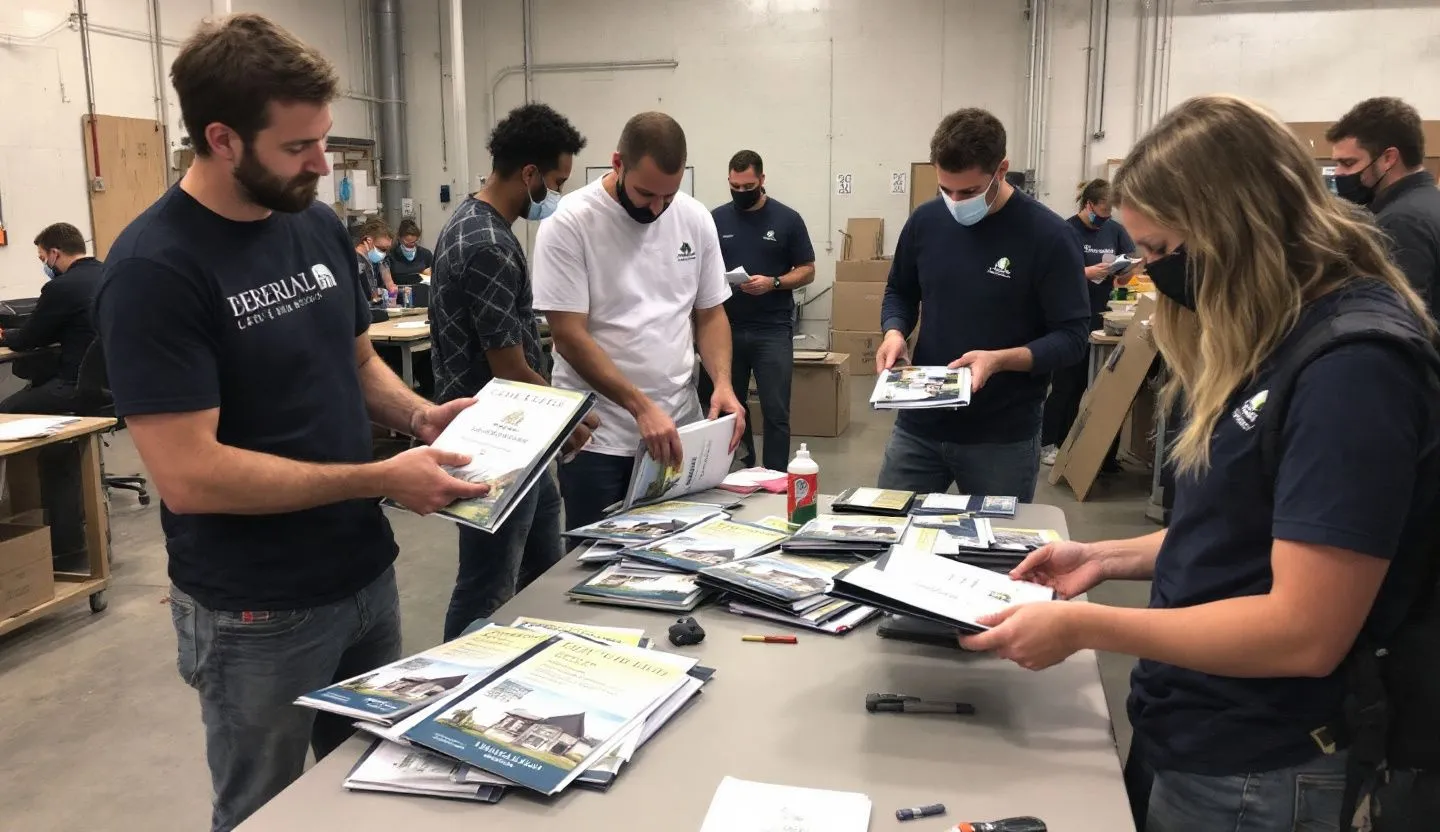There’s a moment every enterprise marketer dreads: that email, Slack, or call from a regional sales lead. “Hey, do you have the latest product sheets? The files on SharePoint are outdated, and I need to get this to a prospect before lunch.” Or maybe it’s the compliance officer, nervously flagging a rogue logo or an expired certification on a website asset. Or it’s the creative director, frustrated that the team is spending hours hunting down the right CAD render instead of designing the next campaign.
I’ve been there,juggling speed, scale, and brand control, while fielding requests from every corner of the organization. The pain is real: content scattered across hard drives, servers, and cloud storage; outdated assets still in circulation; brand standards enforced by wishful thinking more than process. The cost is more than time,it’s brand risk, lost revenue, and a gnawing sense that we’re leaving value on the table.
This isn’t just a marketing problem. It’s an operations problem, an IT headache, a compliance risk, and a creative bottleneck. In 2025, as manufacturing and industrial brands double down on digital transformation, the way we manage digital assets will be the difference between leading and lagging. And the stakes have never been higher.
The pain of asset chaos in manufacturing and industrial marketing
The real pain isn’t just in lost time,it’s in lost trust. As marketing leaders, we’re expected to deliver consistent, compliant, and on-brand content at scale, whether it’s for a new facility launch in Texas or a product rollout in Germany. But the reality on the ground is messier.
Assets are everywhere. Product photos, safety documentation, training videos, CAD files, regulatory certificates, spec sheets, campaign creative,they all live in different systems, with naming conventions that make sense to someone (but not you). When a distributor in Brazil needs a technical drawing or a plant manager in Ohio wants a new signage template, how confident are you that they’re using the right version?
What keeps me up at night isn’t just the inefficiency. It’s the risk. Outdated certifications in a sales presentation can trigger compliance issues. An old logo on a product manual can erode brand trust. Missing assets mean missed opportunities,and in a global industrial environment, there are no do-overs. The cost of digital asset chaos isn’t theoretical; it’s on the P&L, in the risk register, and sometimes in the headlines.
Why 2025 is a tipping point for manufacturing and industrial digital asset management
So why is this problem coming to a head now? Because the pace and complexity of digital content in manufacturing and industrial sectors have exploded. In 2025, several shifts are making the old ways unsustainable.
- First: product complexity is at an all-time high. A single industrial product line can generate hundreds of assets,drawings, certifications, videos, localized brochures, 3D models,each with its own update cycle and compliance needs.
- Second: the go-to-market model is more distributed than ever. Channel partners, field teams, global subsidiaries,they all need fast, secure access to the latest assets, but with controls to ensure compliance.
- Third: regulatory requirements are increasing. Whether it’s ISO certifications, environmental disclosures, or industry-specific mandates, the bar for accurate, up-to-date documentation keeps rising.
- Last but not least: customer expectations have shifted. Industrial buyers want the same digital experience they get in consumer markets: fast, seamless, personalized, and always on-brand.
The old tools,shared drives, email attachments, manual tracking,simply can’t keep up. We’re not just managing files; we’re orchestrating the digital backbone of our brand. That’s why manufacturing & industrial digital asset management (DAM) is moving from a “nice to have” to a strategic necessity.
What manufacturing & industrial digital asset management really means today
Let’s get clear on what DAM is,and isn’t. At its core, DAM is about providing a single source of truth for all digital assets: from product photos and compliance certificates to 3D renderings and marketing collateral. But for manufacturing and industrial brands, it goes further.
It’s about integrating with the systems that matter: ERP, PLM, MRM, and marketing automation. It’s about granular permissions, so a distributor in Mexico can access approved product images, but not confidential CAD drawings. It’s about version control, so only the latest safety datasheet is in the field. And it’s about audit trails, so when compliance or legal teams ask, you have the answers at your fingertips.
A modern DAM for manufacturing isn’t just cloud storage with a search bar. It’s a dynamic platform that connects assets, processes, and people across the organization,and across the globe.
The shift: why old asset management approaches no longer work
If you’ve ever had to explain to IT why marketing needs yet another cloud storage solution, you know the drill: “Can’t you just use what we have?” But traditional file shares, generic cloud drives, and legacy document management tools fall short for modern industrial marketing. Here’s why:
- First: they weren’t built for scale. When you’re managing thousands of SKUs, each with their own content lifecycle, folder structures break down. Search becomes a nightmare, and metadata is an afterthought, not a foundation.
- Second: they lack the controls we need. In manufacturing and industrial marketing, compliance isn’t optional. We need granular permissions, expiration dates, approval workflows, and audit trails. Generic solutions force us to bolt on manual processes, which inevitably break down under pressure.
- Third: they don’t integrate with our workflows. Our assets don’t live in isolation,they power websites, product configurators, sales tools, and partner portals. If your DAM can’t connect seamlessly with these systems, you’re stuck copying, pasting, and re-uploading. That’s not just inefficient; it’s a recipe for version chaos and brand risk.
- Finally: they don’t support the realities of global industrial teams. Localization, multi-brand management, and secure external sharing aren’t “nice to haves”,they’re table stakes. Without them, speed-to-market suffers, and so does brand consistency.
The solution: strategies to maximize value with manufacturing & industrial DAM
Centralize, but don’t silo
The most effective DAM strategies start with centralization,a single source of truth for every digital asset, governed by clear taxonomy and metadata. But centralization doesn’t mean isolation. The DAM must integrate with the systems your teams already use: ERP for product data, MRM for campaign management, PLM for technical documentation, and marketing automation for distribution.
In practice, this means working closely with IT and operations leaders to design integrations that fit existing workflows. When a new product is launched, the DAM should automatically ingest the latest specs and assets from PLM. When marketing updates a campaign, the new creative should flow directly into the sales portal. This is how you deliver speed without sacrificing control.
Prioritize brand consistency and compliance
Brand consistency isn’t just a design issue,it’s a strategic asset. In manufacturing, where products are complex and highly regulated, the smallest deviation can have outsized consequences. That’s why a modern DAM must enforce brand standards by design.
This means version control, automated approvals, and dynamic templates that lock in the right logos, fonts, and legal language. It also means granular permissions, so only authorized users can access sensitive or regulated content. For compliance teams, audit trails and expiration dates provide the peace of mind that only current, approved assets are in use.
The result: less firefighting, more confidence. When a distributor downloads a product sheet, you know it’s current. When the legal team reviews marketing collateral, the right disclaimers are already in place. Compliance becomes proactive, not reactive.
Enable self-service, but stay in control
One of the biggest sources of frustration in industrial marketing is bottlenecks. Field teams, partners, and even internal stakeholders often wait days for access to assets. A well-designed DAM changes this dynamic by enabling self-service,without sacrificing control.
This requires intuitive search, smart filters, and dynamic portals tailored to each audience. Partners can find what they need, in the right language and format, without digging through email threads or outdated folders. Meanwhile, admins retain full visibility and control, with the ability to set permissions, track downloads, and enforce expiration dates.
The impact is real: faster speed-to-market, fewer redundant requests, and happier stakeholders. In a recent rollout for a global manufacturer, moving to a self-service DAM reduced asset request turnaround from days to minutes,and freed up the marketing ops team to focus on strategy, not file management.
Build for security, scalability, and integration
For enterprise manufacturing and industrial brands, DAM isn’t just about marketing,it’s about protecting IP, supporting global operations, and integrating with mission-critical systems. Security can’t be an afterthought.
Work closely with IT, legal, and compliance to ensure your DAM meets enterprise standards:
- Authentication and access: SSO, multi-factor authentication, and role-based access controls are essential for protecting sensitive assets.
- Data residency and sovereignty: For global brands, the ability to control where data is stored is critical for regulatory compliance.
- Integration with enterprise systems: APIs, webhooks, and connectors ensure your DAM plays nicely with ERP, PLM, and marketing platforms, reducing manual work and risk.
Scalability matters, too. As your product lines and markets grow, your DAM should scale seamlessly,handling millions of assets, supporting dozens of brands, and serving thousands of users without a hitch.
Measure value and drive continuous improvement
Like any enterprise investment, DAM should be measured by its impact. But in manufacturing and industrial marketing, the metrics go beyond downloads and logins.
Start by defining clear KPIs:
- Speed-to-market: How much faster are new products, campaigns, or updates reaching the field?
- Brand compliance: Are outdated or non-compliant assets still in use?
- Operational efficiency: How much time is saved on asset requests, approvals, and localization?
- Risk reduction: Are audit trails, expiration dates, and permission controls reducing compliance incidents?
Regularly review these metrics with stakeholders,marketing, IT, compliance, operations,to identify gaps and opportunities. The best DAM strategies are never static; they evolve as your business grows and the digital landscape shifts.
Real-world examples: how leading manufacturers are maximizing DAM value
It’s one thing to talk strategy; it’s another to see it in action. Here are a few examples from peers who’ve made the leap:
A global industrial equipment manufacturer was struggling with inconsistent product documentation across regions. Sales teams in Asia were using outdated spec sheets, while partners in Europe lacked access to new product photos. By centralizing assets in an integrated DAM, and connecting it to their ERP and PLM systems, they reduced asset errors by 80%,and slashed compliance incidents to near zero. The brand looked (and felt) global, consistent, and in control.
A North American building materials company faced a different challenge: every facility had its own “way” of storing and sharing marketing content, leading to confusion and wasted effort. By rolling out a self-service DAM with dynamic portals for each business unit, they empowered local teams while maintaining corporate brand standards. Time to launch new campaigns dropped from weeks to days, and the marketing ops team finally had bandwidth to focus on innovation, not troubleshooting.
Even in highly regulated sectors, DAM is a game-changer. One specialty chemicals manufacturer needed to ensure that only current, compliant safety datasheets were available to distributors and end users. With automated expiration dates and audit trails, they could demonstrate compliance instantly,no more scrambling during audits or product recalls.
The future: what’s possible when DAM unlocks speed and control
When you get DAM right, something remarkable happens. Marketing stops being the bottleneck and becomes the engine for growth. Compliance shifts from reactive policing to proactive assurance. IT and operations become true partners, not gatekeepers. And your brand,not just your products,becomes a competitive advantage.
In 2025, manufacturing & industrial digital asset management is about more than files. It’s about orchestrating the digital experience for every stakeholder:
- For marketing: The freedom to create, launch, and iterate at speed, without sacrificing brand standards.
- For sales and partners: Instant access to the right assets, in the right format, wherever they are in the world.
- For compliance and legal: Total confidence that only approved, current, and compliant content is in use.
- For IT and operations: A secure, scalable, and integrated solution that supports the business, not the other way around.
The best part? When DAM is embedded in your processes, it fades into the background,no more frantic asset hunts, no more compliance fire drills, no more brand drift. Just a smooth, consistent, and efficient engine for growth.
Making the business case: DAM as a value multiplier
Let’s talk ROI. In enterprise manufacturing and industrial marketing, DAM isn’t just a cost center,it’s a value multiplier. The benefits are both hard and soft:
- Hard savings: Reduced time spent on asset requests, fewer compliance incidents, faster product launches, and lower legal risk.
- Soft value: Improved brand perception, higher employee satisfaction, better partner enablement, and more time for strategic work.
When pitching DAM to the C-suite, frame it as a strategic enabler. It’s not just about managing files; it’s about accelerating go-to-market, protecting the brand, and supporting global operations. In a world where every minute and every impression counts, that’s a story that resonates.
Practical steps to get started (or level up) with manufacturing & industrial DAM
If you’re feeling the pain of asset chaos,or see it coming,here’s how to get moving:
- Audit your current state: Map your assets, systems, and workflows. Where are the bottlenecks, risks, and opportunities? Talk to stakeholders across marketing, sales, operations, and compliance.
- Define your goals: Is your priority speed-to-market, compliance, brand consistency, or all of the above? Be clear about what success looks like.
- Build your business case: Quantify the impact,time saved, risk reduced, revenue protected. Tie DAM to business outcomes.
- Partner with IT and compliance: Bring them in early. Their buy-in is critical for integration, security, and scalability.
- Choose the right platform: Prioritize integration, security, and usability. Think beyond storage,look for workflows, permissions, and analytics that fit your needs.
- Roll out in phases: Start with a pilot (a product line, region, or campaign) and scale from there. Gather feedback, iterate, and celebrate wins.
- Measure, learn, and evolve: DAM isn’t “set and forget.” Review KPIs, gather feedback, and continuously improve. The landscape will keep shifting,your strategy should, too.
In 2025, manufacturing & industrial digital asset management isn’t just an IT project or a marketing convenience,it’s the backbone of brand, compliance, and operational efficiency. As the pace of digital transformation accelerates, the risks and opportunities around asset management only grow. The pain of asset chaos is real, but so is the upside when you get it right: faster launches, tighter compliance, stronger brands, and teams that can finally focus on what matters.
For enterprise marketing leaders, the shift isn’t just about technology. It’s about building a culture and a process that aligns people, platforms, and priorities. It’s about empowering every stakeholder,from creative to compliance, from the plant floor to the boardroom,to do their best work, with the confidence that comes from control. By embracing a modern, integrated DAM strategy, manufacturing and industrial brands can unlock new levels of value and operational efficiency. The result: a brand that’s not just protected, but propelled, in the markets that matter most.







